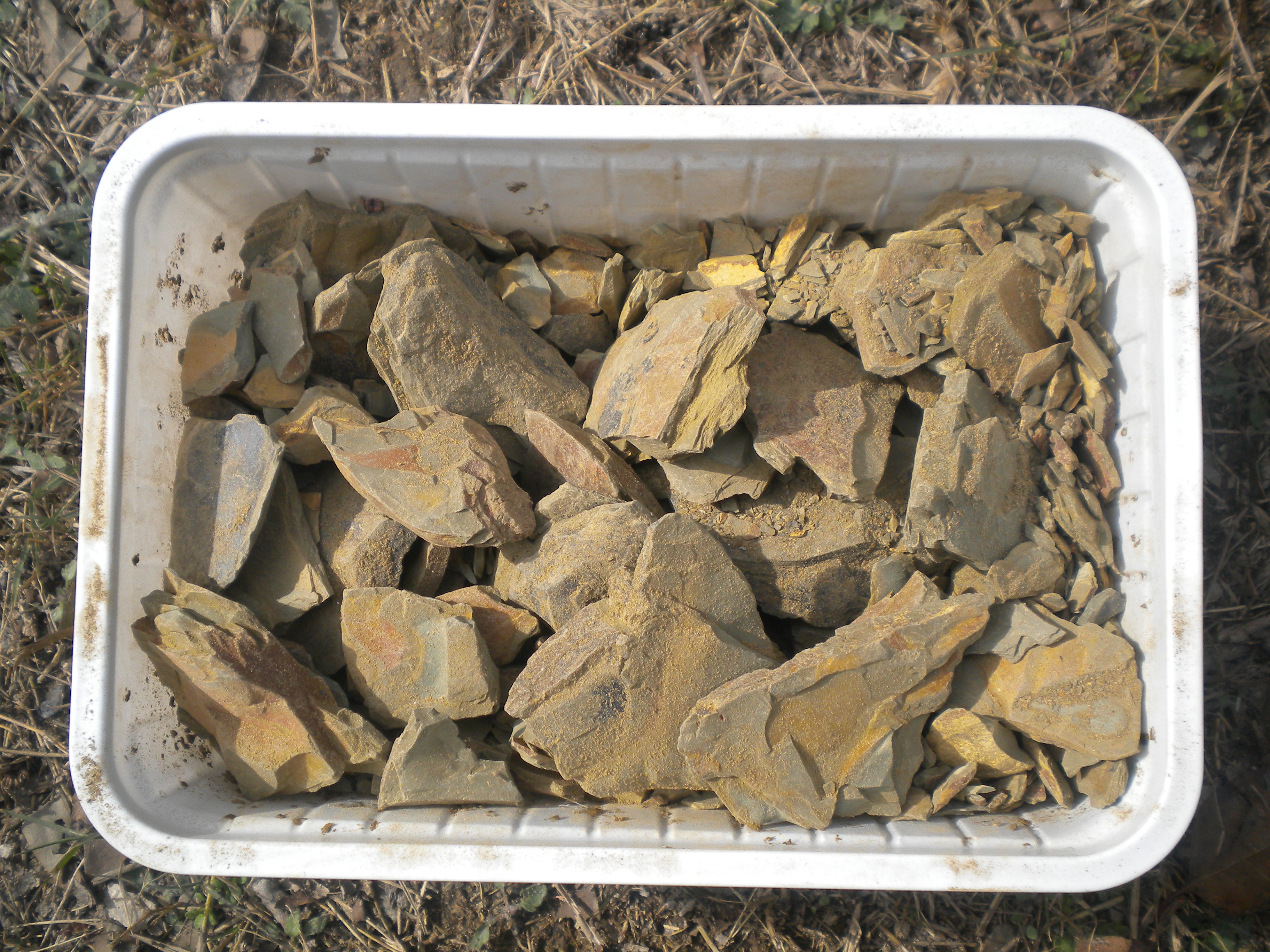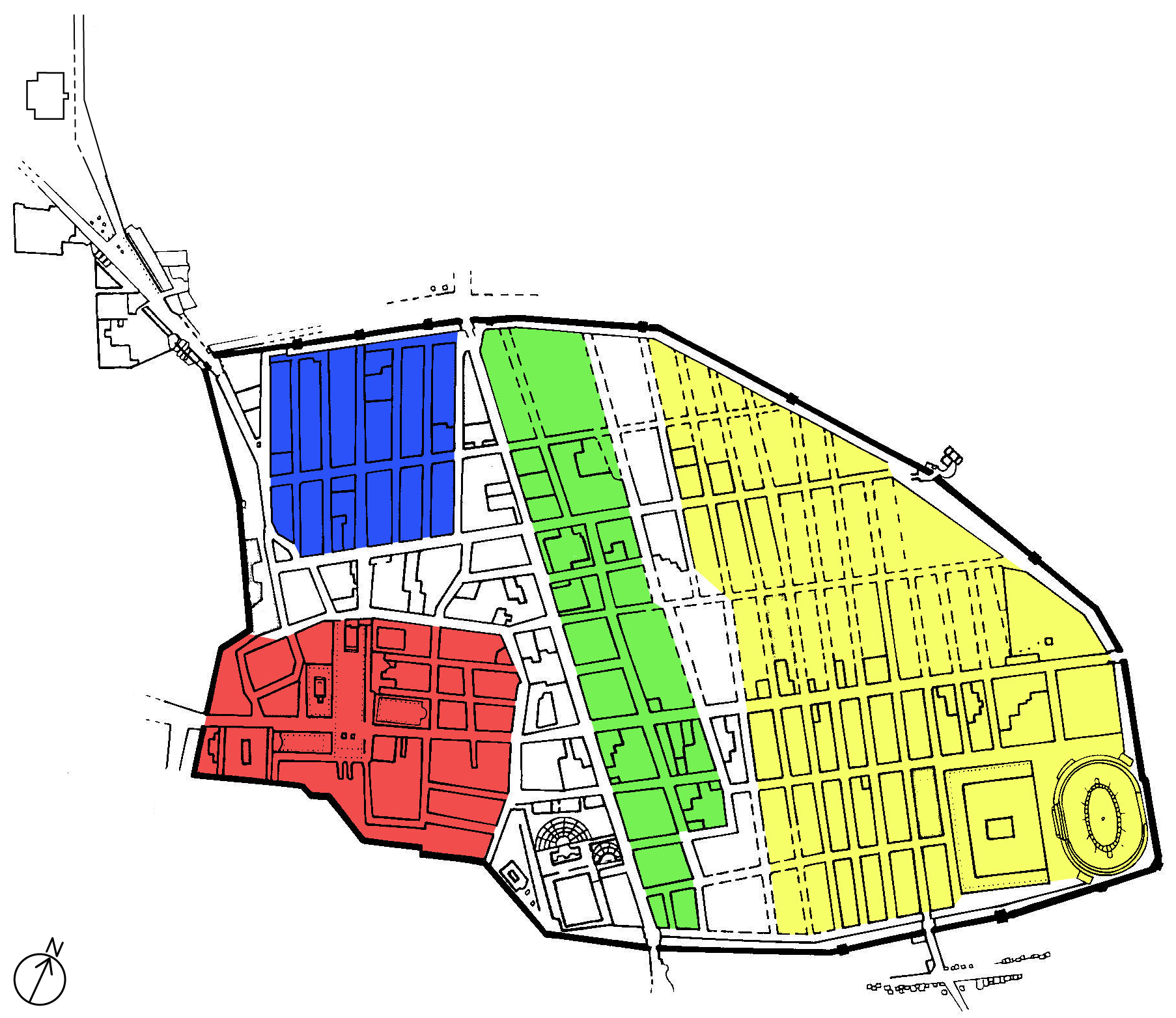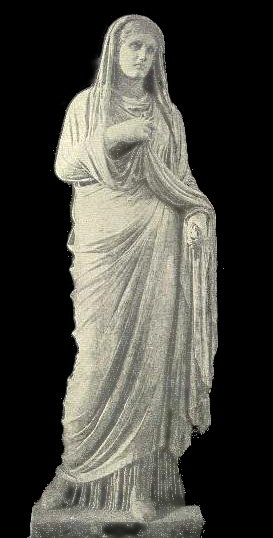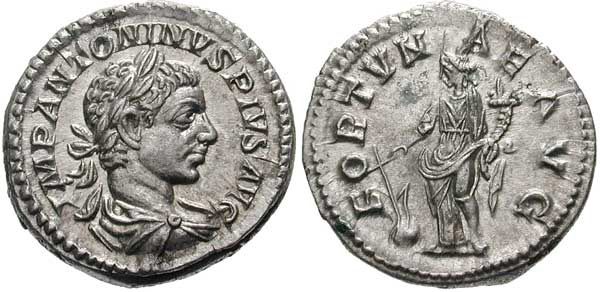|
Fullo
A ''fullo'' was a Roman fuller or laundry worker (plural: ''fullones''), known from many inscriptions from Italy and the western half of the Roman Empire and references in Latin literature, e.g. by Plautus, Martialis and Pliny the Elder. A ''fullo'' worked in a fullery or ''fullonica''. There is also evidence that ''fullones'' dealt with cloth straight from the loom, though this has been doubted by some modern scholars. In some large farms, fulleries were built where slaves were used to clean the cloth. In several Roman cities, the workshops of fullones, have been found. The most important examples are in Ostia and Pompeii, but ''fullonicae'' also have been found in Delos, Florence, Fréjus and near Forlì: in the Archaeological Museum of Forlì, there is an ancient relief with a fullery view. While the small workshops at Delos go back to the 1st century BC, those in Pompeii date from the 1st century AD and the establishments in Ostia and Florence were built during the reign of ... [...More Info...] [...Related Items...] OR: [Wikipedia] [Google] [Baidu] |
Roman Empire
The Roman Empire ( la, Imperium Romanum ; grc-gre, Βασιλεία τῶν Ῥωμαίων, Basileía tôn Rhōmaíōn) was the post- Republican period of ancient Rome. As a polity, it included large territorial holdings around the Mediterranean Sea in Europe, North Africa, and Western Asia, and was ruled by emperors. From the accession of Caesar Augustus as the first Roman emperor to the military anarchy of the 3rd century, it was a Principate with Italia as the metropole of its provinces and the city of Rome as its sole capital. The Empire was later ruled by multiple emperors who shared control over the Western Roman Empire and the Eastern Roman Empire. The city of Rome remained the nominal capital of both parts until AD 476 when the imperial insignia were sent to Constantinople following the capture of the Western capital of Ravenna by the Germanic barbarians. The adoption of Christianity as the state church of the Roman Empire in AD 380 and the fall of th ... [...More Info...] [...Related Items...] OR: [Wikipedia] [Google] [Baidu] |
Roman Graffiti
In archaeological terms, graffiti (plural of graffito) is a mark, image or writing scratched or engraved into a surface. There have been numerous examples found on sites of the Roman Empire, including taverns and houses, as well as on pottery of the time. In many cases the graffiti tend toward the rude, with a line etched into the basilica in Pompeii reading "Lucilla made money from her body," phallic images, as well as erotic pictures. Other graffiti took on a more innocent nature, taking the form of simple pictures or games. Although many forms of Roman graffiti are indecipherable, studying the graffiti left behind from the Roman Period can give a better understanding of the daily life and attitudes of the Roman people with conclusions drawn about how everyday Romans talked, where they spent their time, and their interactions within those spaces. Graffiti samples Inscriptions cover a range of topics from poems, advertisements, political statements, to greetings. There are two f ... [...More Info...] [...Related Items...] OR: [Wikipedia] [Google] [Baidu] |
Pompeii - Fullonica Of Veranius Hypsaeus 1 - MAN
Pompeii (, ) was an ancient city located in what is now the ''comune'' of Pompei near Naples in the Campania region of Italy. Pompeii, along with Herculaneum and many villas in the surrounding area (e.g. at Boscoreale, Stabiae), was buried under of volcanic ash and pumice in the Eruption of Mount Vesuvius in 79 AD. Largely preserved under the ash, the excavated city offered a unique snapshot of Roman life, frozen at the moment it was buried, although much of the detailed evidence of the everyday life of its inhabitants was lost in the excavations. It was a wealthy town, with a population of ca. 11,000 in AD 79, enjoying many fine public buildings and luxurious private houses with lavish decorations, furnishings and works of art which were the main attractions for the early excavators. Organic remains, including wooden objects and human bodies, were interred in the ash. Over time, they decayed, leaving voids that archaeologists found could be used as moulds to make plaster c ... [...More Info...] [...Related Items...] OR: [Wikipedia] [Google] [Baidu] |
Fuller's Earth
Fuller's earth is any clay material that has the capability to decolorize oil or other liquids without the use of harsh chemical treatment. Fuller's earth typically consists of palygorskite ( attapulgite) or bentonite. Modern uses of fuller's earth include as absorbents for oil, grease, and animal waste (cat litter) and as a carrier for pesticides and fertilizers. Minor uses include filtering, clarifying, and decolorizing; active and inactive ingredient in beauty products; and as a filler in paint, plaster, adhesives, and pharmaceuticals. It also has a number of uses in the film industry and on stage. Etymology The English name reflects the historic use of the material for fulling (cleaning and shrinking) wool, by textile workers known as ''fullers''. In past centuries, fullers kneaded fuller's earth and water into woollen cloth to absorb lanolin, oils, and other greasy impurities as part of the cloth finishing process. The original spelling was without an apostrophe, bu ... [...More Info...] [...Related Items...] OR: [Wikipedia] [Google] [Baidu] |
Pompeii
Pompeii (, ) was an ancient city located in what is now the ''comune'' of Pompei near Naples in the Campania region of Italy. Pompeii, along with Herculaneum and many villas in the surrounding area (e.g. at Boscoreale, Stabiae), was buried under of volcanic ash and pumice in the Eruption of Mount Vesuvius in 79 AD. Largely preserved under the ash, the excavated city offered a unique snapshot of Roman life, frozen at the moment it was buried, although much of the detailed evidence of the everyday life of its inhabitants was lost in the excavations. It was a wealthy town, with a population of ca. 11,000 in AD 79, enjoying many fine public buildings and luxurious private houses with lavish decorations, furnishings and works of art which were the main attractions for the early excavators. Organic remains, including wooden objects and human bodies, were interred in the ash. Over time, they decayed, leaving voids that archaeologists found could be used as moulds to make plast ... [...More Info...] [...Related Items...] OR: [Wikipedia] [Google] [Baidu] |
Eumachia
Eumachia (1st century AD) was a Roman business entrepreneur and priestess. She served as the public priestess of Venus Pompeiana in Pompeii as well as the matron of the Fullers guild. She is known primarily from inscriptions on a large public building which she financed and dedicated to Pietas and Concordia Augusta.Lefkowitz, Mary R., and Maureen B. Fant. Women's Life in Greece and Rome. London: Duckworth, 1982. 259. Name and Family Eumachia was the daughter of Lucius Eumachius, who amassed a large fortune as a manufacturer of bricks, tiles and amphorae. She married Marcus Numistrius Fronto, who may have held the important office of ''duovir.'' The Numistrii were one of Pompeii's oldest and most powerful families. All that is certain is that Eumachia was able to use her wealth and social standing to obtain the position of public priestess of the goddess Venus Pompeiana (the city's patron goddess), and she became a successful '' patronus'' of the economically significant guild ... [...More Info...] [...Related Items...] OR: [Wikipedia] [Google] [Baidu] |
Ancient Rome
In modern historiography, ancient Rome refers to Roman civilisation from the founding of the city of Rome in the 8th century BC to the collapse of the Western Roman Empire in the 5th century AD. It encompasses the Roman Kingdom (753–509 BC), Roman Republic (509–27 BC) and Roman Empire (27 BC–476 AD) until the fall of the western empire. Ancient Rome began as an Italic settlement, traditionally dated to 753 BC, beside the River Tiber in the Italian Peninsula. The settlement grew into the city and polity of Rome, and came to control its neighbours through a combination of treaties and military strength. It eventually dominated the Italian Peninsula, assimilated the Greek culture of southern Italy (Magna Grecia) and the Etruscan culture and acquired an Empire that took in much of Europe and the lands and peoples surrounding the Mediterranean Sea. It was among the largest empires in the ancient world, with an estimated 50 to 90 million inhabitants, roughly ... [...More Info...] [...Related Items...] OR: [Wikipedia] [Google] [Baidu] |
Quinquatrus
In ancient Roman religion, the Quinquatria or Quinquatrus was a festival sacred to the Goddess Minerva, celebrated from the 19–23 of March. The older festivals were of Etruscan origin and were to celebrate the Spring equinox, the spring rebirth rites of women. According to Varro, it was so called because it was held on the fifth ''(quinqu-)'' day after the Ides, in the same way as the Tusculans called a festival on the sixth day after the Ides ''Sexatrus'' or one on the seventh ''Septimatrus''. Both Varro and Festus state that the Quinquatrus was celebrated for only one day, but Ovid says that it was celebrated for five days, hence the name: on the first day no blood was shed, but that on the last four there were contests of gladiators. The first day was the festival proper, and that the following four were an expansion made perhaps in the time of Caesar to gratify the people. The ancient Roman religious calendars assign only one day to the festival. Ovid says that this fes ... [...More Info...] [...Related Items...] OR: [Wikipedia] [Google] [Baidu] |
Minerva
Minerva (; ett, Menrva) is the Roman goddess of wisdom, justice, law, victory, and the sponsor of arts, trade, and strategy. Minerva is not a patron of violence such as Mars, but of strategic war. From the second century BC onward, the Romans equated her with the Greek goddess Athena.''Larousse Desk Reference Encyclopedia'', Book People, Haydock, 1995, p. 215. Minerva is one of the three Roman deities in the Capitoline Triad, along with Jupiter and Juno. She was the virgin goddess of music, poetry, medicine, wisdom, commerce, weaving, and the crafts. She is often depicted with her sacred creature, an owl usually named as the " owl of Minerva", which symbolised her association with wisdom and knowledge as well as, less frequently, the snake and the olive tree. Minerva is commonly depicted as tall with an athletic and muscular build, as well as wearing armour and carrying a spear. As the most important Roman goddess, she is highly revered, honored, and respected. M ... [...More Info...] [...Related Items...] OR: [Wikipedia] [Google] [Baidu] |
Herculaneum
Herculaneum (; Neapolitan and it, Ercolano) was an ancient town, located in the modern-day ''comune'' of Ercolano, Campania, Italy. Herculaneum was buried under volcanic ash and pumice in the eruption of Mount Vesuvius in AD 79. Like the nearby city of Pompeii, Herculaneum is famous as one of the few ancient cities to be preserved nearly intact, as the ash that blanketed the town protected it against looting and elements. Although less known than Pompeii today, it was the first, and the only discovered buried Vesuvian city (in 1709) for a long time. Pompeii was revealed only in 1748 and identified in 1763. Unlike Pompeii, the mainly pyroclastic material that covered Herculaneum carbonized and preserved more wood in objects such as roofs, beds, and doors, as well as other organic-based materials such as food and papyrus. According to the traditional tale, the city was rediscovered by chance in 1709, during the drilling of a well. Remnants of the city, however, were alrea ... [...More Info...] [...Related Items...] OR: [Wikipedia] [Google] [Baidu] |
Elagabalus
Marcus Aurelius Antoninus (born Sextus Varius Avitus Bassianus, 204 – 11/12 March 222), better known by his nickname "Elagabalus" (, ), was Roman emperor from 218 to 222, while he was still a teenager. His short reign was conspicuous for sex scandals and religious controversy. A close relative to the Severan dynasty, he came from a prominent Arab family in Emesa (Homs), Syria, where since his early youth he served as head priest of the sun god Elagabal. After the death of his cousin, the emperor Caracalla, Elagabalus was raised to the principate at 14 years of age in an army revolt instigated by his grandmother Julia Maesa against Caracalla's short-lived successor, Macrinus. He only posthumously became known by the Latinised name of his god. Later historians suggest Elagabalus showed a disregard for Roman religious traditions and sexual taboos. He replaced the traditional head of the Roman pantheon, Jupiter, with the deity Elagabal, of whom he had been high priest. ... [...More Info...] [...Related Items...] OR: [Wikipedia] [Google] [Baidu] |
Owl Of Minerva
Owls are birds from the order Strigiformes (), which includes over 200 species of mostly solitary and nocturnal birds of prey typified by an upright stance, a large, broad head, binocular vision, binaural hearing, sharp talons, and feathers adapted for silent flight. Exceptions include the diurnal northern hawk-owl and the gregarious burrowing owl. Owls hunt mostly small mammals, insects, and other birds, although a few species specialize in hunting fish. They are found in all regions of the Earth except the polar ice caps and some remote islands. Owls are divided into two families: the true (or typical) owl family, Strigidae, and the barn-owl family, Tytonidae. A group of owls is called a "parliament". Anatomy Owls possess large, forward-facing eyes and ear-holes, a hawk-like beak, a flat face, and usually a conspicuous circle of feathers, a facial disc, around each eye. The feathers making up this disc can be adjusted to sharply focus sounds from varying distanc ... [...More Info...] [...Related Items...] OR: [Wikipedia] [Google] [Baidu] |










